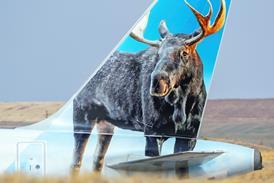Raytheon Missile Systems unveiled a bold strategy on 16 June to compete as a prime contractor and aircraft designer in the rising market for medium-altitude long-endurance (MALE) unmanned aircraft systems.
The Tuscon-based division has drawn up several aircraft concept for the US Air Force's pending MQ-X requirement, which aims to replace the General Atomics MQ-1 vehicle.
One concept shows a new UAS with a conventional fuselage, swept-back wing and two canted tail fins, with a single turboprop engine mounted atop the aft fuselage between the two fins.
Mark Bigham, a Raytheon business development director, says the company has also looked at other designs, including a scaled-up version of the KillerBee-4 UAS with a landing gear.
Raytheon's interest in taking a prime role on MQ-X reflects an aggressive corporate strategy to dramatically expand into the UAS market.
The company dipped its toe in the UAS space several years ago with the internally developed Cobra UAS testbed. It has also partnered Swift Engineering to offer the 3m (10ft) wingspan KB-4 for the US Air Force/US Marine Corps small tactical UAS/Tier II contract, which is now in source selection.
Raytheon also has a broad presence throughout the US military's current UAS supply chain, providing sensors systems for the MQ-1 Predator/Sky Warrior, MQ-9 Reaper and Northrop Grumman RQ-4 Global Hawk. Raytheon is also a main supplier for UAS ground stations on the USAF version of the Global Hawk.
Moreover, the Air National Guard has requested funds in fiscal year 2010 to buy 15 of Raytheon's universal control systems to replace the GA-ASI-supplied ground station for Predator, Bigham says.
The control system is designed to be configurable by the UAS pilots and sensor operators, allowing the option of standing or sitting while controlling multiple functions. It is also equipped to control multiple types of UAS simultaneously, Raytheon says.
Raytheon is also developing a new version of the control system to replace its current ground station for the USAF's RQ-4 fleet, Bigham says.
- All the latest news, images and video from the Paris Air Show
Source: Flight Daily News























